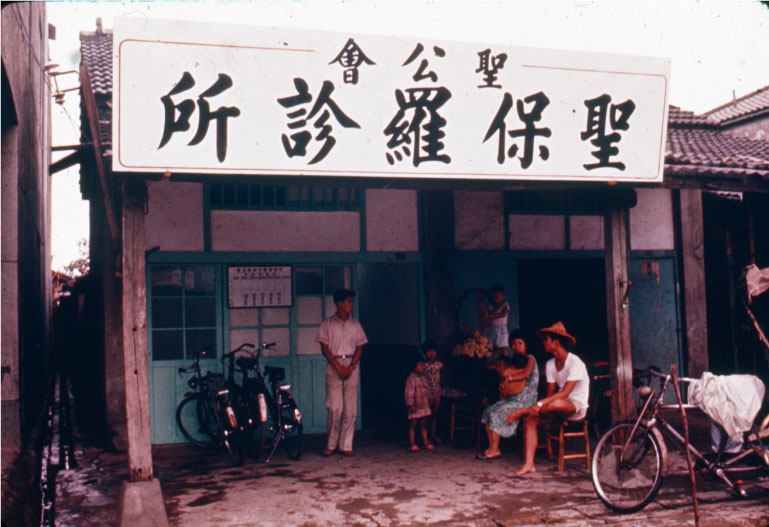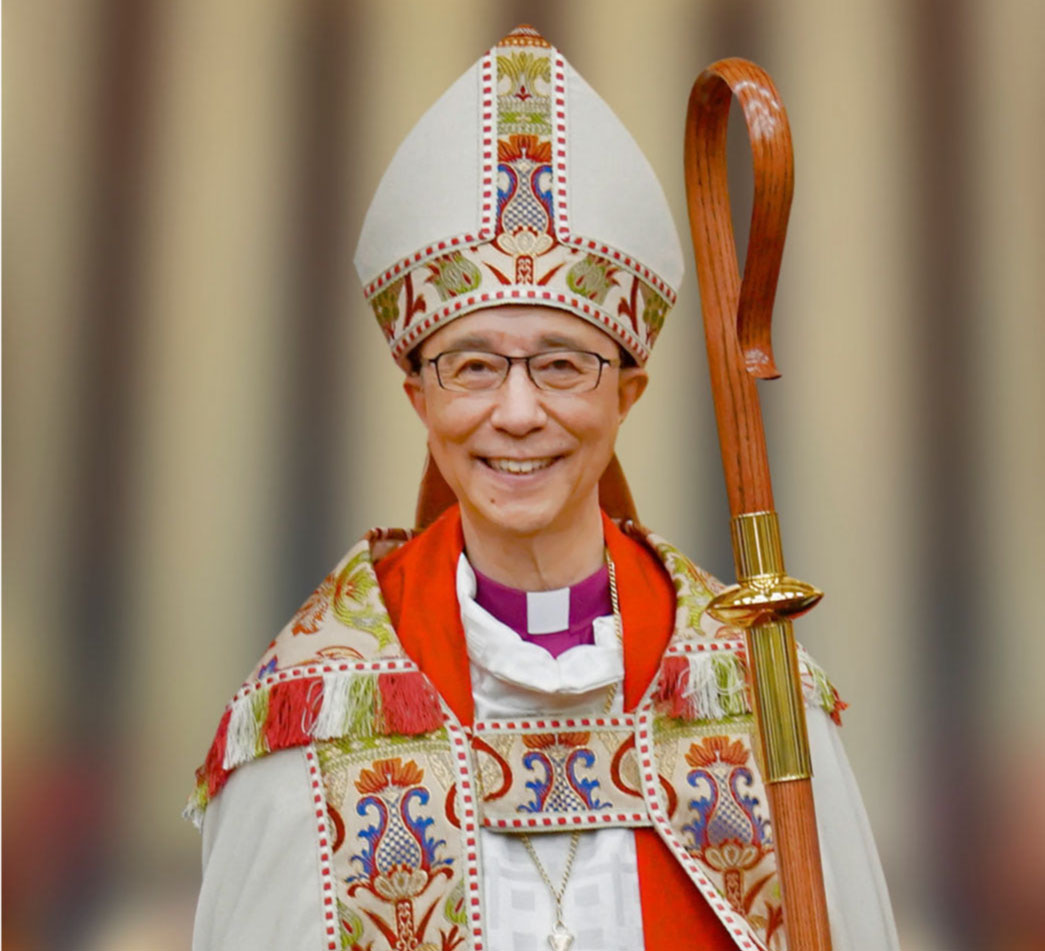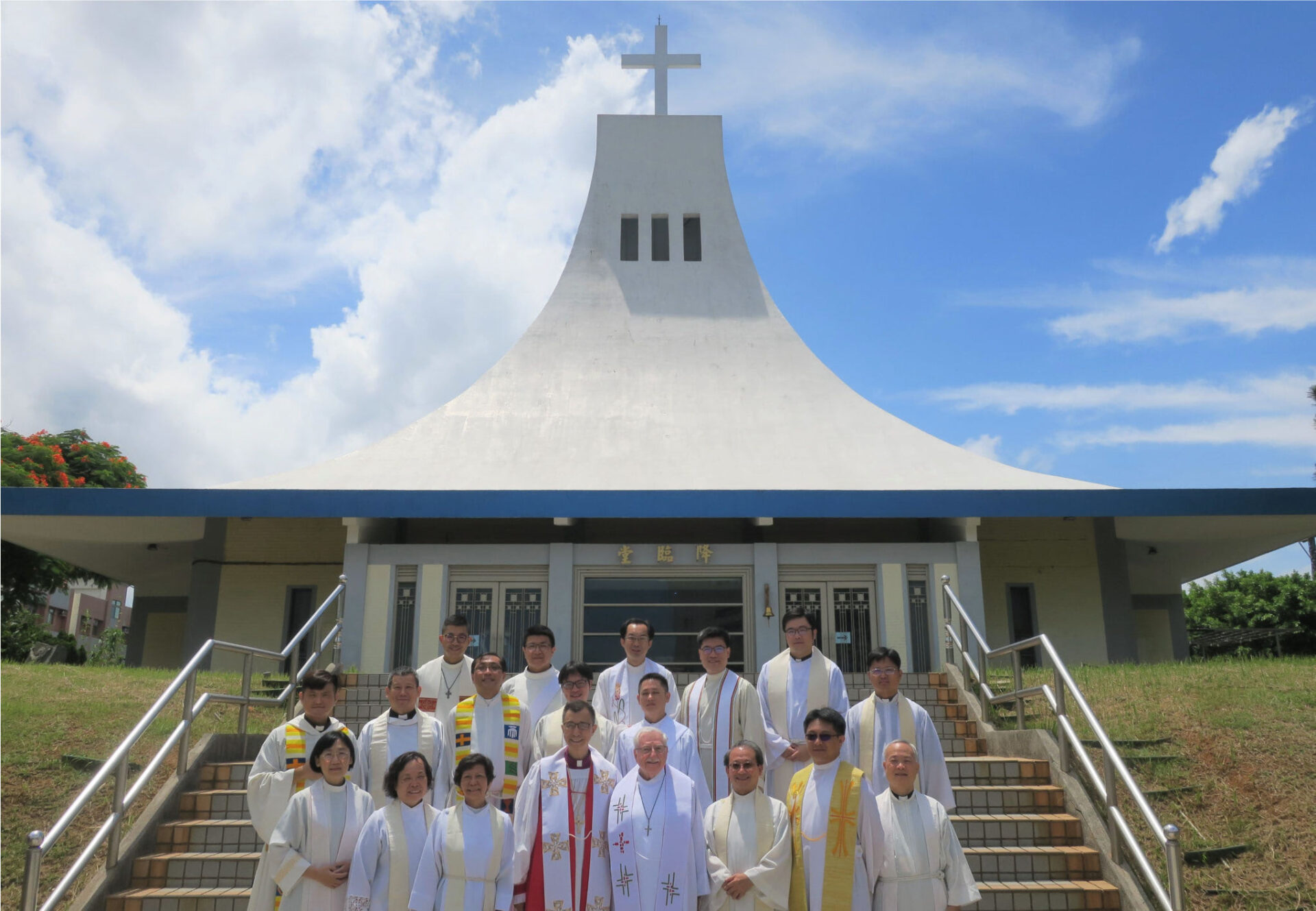About Us
— 台灣聖公會
THE TAIWAN EPISCOPAL CHURCH

Zhongshan Presbyterian Church, Taipei, built in 1937 originally as Taisho Street NSKK Japanese Anglican Church
The Taiwan Episcopal Church is part of Province VIII of the US-based Episcopal Church, a member church of the worldwide Anglican Communion. The history of the Anglican / Episcopal Church in Taiwan goes back to the Japanese colonization era,1895-1945, during which time the Japanese Anglican Church (NSKK) owned church buildings in Taiwan and held services for their own Japanese citizens. Taiwan was then administered as part of the Diocese of Osaka. After the Japanese left Taiwan in 1945, most of their Anglican Church buildings were taken by the Nationalist government in Taiwan and given to other denominations. Taiwan and Osaka reconnected in 2005, when the two dioceses signed a companion diocese agreement, renewable every three years, which actively continues to the present day.
The official name of the Anglican / Episcopal Church in Chinese is 聖公會 (pronounced ‘Sheng Kung Hui’ in Chinese, ‘Sei Ko Kai’ in Japanese). The US Episcopal Church started its evangelism in China in 1835, and in Japan in 1859; they were followed soon after by Britain, Canada and Australia. Differences between Anglican and Episcopal churches led to much discussion about what official name to adopt in translation, and finally in 1887, the Japanese decided to take part of the Nicene Creed, ‘We believe in one holy catholic and apostolic Church’ and from that phrase to adopt ‘The Holy Catholic Church’ (聖公會, 聖: holy, 公: catholic, 會: church) for its name, pronounced in Japanese as ‘Nippon Sei Ko Kai’ (NSKK), the ‘Holy Catholic Church in Japan’. In 1912, the church in China came to the same decision and called the new church, ‘Chung Hua Sheng Kung Hui’ (CHSKH), 中華聖公會, the ‘Holy Catholic Church in China’.
The Taiwan Episcopal Church was established in 1954 by church members from different dioceses of CHSKH who moved to Taiwan, and supported by the US Episcopal Church, also to serve the American military based in Taiwan, coming under the jurisdiction of the Bishop of Hawaii. Some suggested that the Episcopal Church should fight through the courts for the return of those church buildings originally owned by the Japanese Anglican Church. However, in an act of humility and in a desire for reconciliation, Bishop Harry S. Kennedy decided that those church buildings given to other denominations would not be taken back and that we would buy land and build our own churches.

St. Paul’s Clinic, Kaohsiung, 1964
Life in the years after World War II was not easy, and the Episcopal Church started its mission by opening clinics to take care of the sick, and by working among the refugees from Mainland China. In the 1950’s and 60’s, clergy in the Taiwan Episcopal Church were all sent by the US Episcopal Church as missionaries. The congregations were made up of civil servants and military people who had come to Taiwan from Mainland China and who spoke and worshiped in Mandarin Chinese, rather than in the local language, Taiwanese. The ecumenical movement started in the 1960’s, and the Tainan Theological College (Presbyterian) opened its doors to other denominations, including those from the Episcopal Church. The classes were in Taiwanese, a great challenge for those first Episcopal seminarians whose first language was Mandarin Chinese. The first Episcopal clergy to train in Taiwan were retired civil servants originally from Mainland China, only later were Taiwanese clergy trained and ordained. In 1965, the Rev. Richard C. S. Ou was the first Taiwanese priest to be ordained in the Taiwan Episcopal Church. In 1997, Rev. Elizabeth F. J. Wei was ordained as Taiwan’s first woman priest.
The first two Bishops of Taiwan were appointed by the US Episcopal Church, Harry S. Kennedy (1953-60) and Charles P. Gilson (1961-64). The next three bishops came from Hong Kong, James C. L. Wong (1965-70), James T. M. Pong (1971-80) and P. Y. Cheung (1980-87). Bishop John C. T. Chien was elected as the first Taiwanese Bishop of Taiwan (1988-2001); and he was succeeded by Bishop David J. H. Lai (2001-2020). Bishop Lennon Y. R. Chang is the current bishop, consecrated on February 22, 2020.

Rt. Rev. Lennon Yuan-Rung Chang, Bishop of Taiwan

Taiwan Episcopal Church Clergy 2020 at Advent Church
The Diocese of Taiwan Trinity Hall Training Program was started in 1984 to meet the need for Anglican theological training for clergy and laity. This was reestablished in 2020 and renamed as Trinity School for Christian Ministry. Under Bishop John C. T. Chien, clergy started to be trained at Fu-Jen Catholic Seminary, Taipei, and under Bishop David J. H. Lai, opportunities arose for clergy to receive their training at Ming Hua Theological College, Hong Kong. Most clergy have also had the opportunity to spend time overseas (ranging from a few months to a year) on sabbatical study leave or parish experience. International links were further enhanced when The Episcopal Church House of Bishops fall meeting was held in Taiwan in 2014, with over 100 bishops and their spouses in attendance.
In 2010, the Diocese of Taiwan completed the translation and publication of The Book of Common Prayer (1979) in Mandarin Chinese (suitable for use in Taiwan). The Diocese of Taiwan currently supports 16-18 churches & outreach centers, eight kindergartens and also St. John’s University. Most churches use Mandarin Chinese in worship, some use Taiwanese, and there are also three English congregations, at St. John’s Cathedral, Good Shepherd Church, Taipei and St. James’ Church, Taichung.
The Taiwan Episcopal Church is unique in a population of 23 million people where less than 5% claim the Christian faith. The history has been one of gradual inculturation and integration. In the early days, it was strongly associated with those moving to Taiwan from Mainland China and with the American military. As time has gone on, it has gradually attracted local Taiwanese people and is becoming more fully Taiwanese in nature, as different cultures and people have joined together in faith, giving glory to God.
